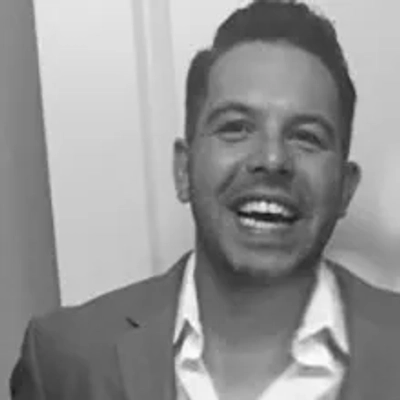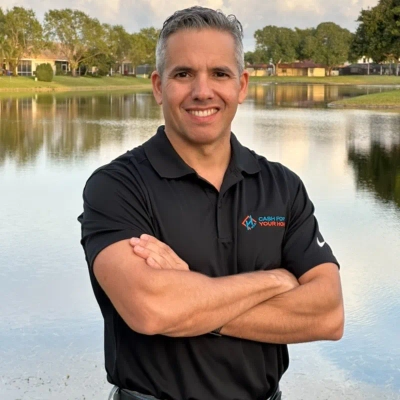What Factors Should You Consider When Making Major Financial Decisions?
Making major financial decisions can be a daunting task, but with the right approach, it becomes manageable and rewarding. This article presents key factors to consider, drawing on insights from experts in personal finance, business, and investment. From prioritizing clarity over emotion to assessing long-term impacts, these strategies will help guide you through significant financial choices with confidence.
- Prioritize Clarity Over Emotion in Financial Choices
- Treat Major Purchases as Long-Term Investments
- Stress-Test Cash Flow Before Committing
- Consider Human Factors in Business Decisions
- Align Purchases with Long-Term Financial Health
- Factor Maintenance Costs into Purchase Decisions
- Reverse-Engineer Decisions from Core Values
- Consider Insurance Implications in Major Purchases
- Approach Purchases Like Business Investments
- Use Data-Driven Analysis for Major Decisions
- Evaluate True Cost of Inaction
- Focus on Long-Term Stability Over Immediate Gratification
- Assess Family Needs and Market Resilience
- Balance Long-Term Goals with Current Finances
- Shop for Market Inefficiencies to Save
- Time Purchases with Market Trends
- Treat Purchases as Part of Investment Portfolio
- Consider Lifestyle Commitments in Financial Decisions
- Prioritize Cash Flow, Timing, and Exit Strategy
- Evaluate Purchases Without Social Influence
- Use Underwriter-Style Decision Stack for Choices
- Prioritize Family and Community Impact
- Balance Practicality with Ambition in Decisions
- Favor Cash Purchases for Financial Security
- Assess Freedom Impact of Major Purchases
Prioritize Clarity Over Emotion in Financial Choices
When it comes to significant financial decisions, such as purchasing a home or a car, I begin with one principle: clarity over emotion. It’s easy to become enamored with the dream house or the gleaming new car, but if the numbers don’t add up, it’s not a wise decision. That’s why I examine affordability through the lens of a monthly budget, not just the overall purchase price. If a payment strains my lifestyle or limits my ability to save, I recognize it’s not the right time.
I also consider timing and context. With a home purchase, I evaluate current interest rates, local market conditions, and whether I’m planning to stay in the area long enough to justify the investment. With a car, it’s more about the total cost of ownership, insurance, maintenance, and fuel efficiency, not just the sales price.
Another filter is motivation. Am I making this decision because it’s truly necessary, or am I reacting to pressure or impulse? Separating need from want protects me from choices I might regret later.
Finally, I always tie it back to freedom. A smart financial move should expand options and stability, not create stress or limit flexibility. If a purchase helps build long-term security, I proceed. If it feels like it would constrain me, I wait.
 Samantha Shelton
Samantha Shelton
Owner/Founder, Align Lending
Treat Major Purchases as Long-Term Investments
I treat every significant financial decision as an investment first, purchase second. I personally have three main areas I concentrate on with houses: location stability, long-term maintenance costs, and possible resale value. A home may look like a steal at first glance, but once you factor in the expense of a new roof and outdated flooring, the cost of that home could actually be more when compared with that of a newer home that’s slightly pricier. In Des Moines, I recently directed a client to a house that wasn’t the lowest price listed, but with steady school rating increases in the neighborhood and updated mechanicals, this investment quickly gained value in just two years.
The calculus changes with cars, but the principle doesn’t — long view over short: last laughs, at least in the world of upscale coupes, belong to those who hang on to theirs. How much these things cost and how long they last: I figure, how long does the asset serve its purpose? What do the maintenance costs look like? Am I paying a premium for a feature that doesn’t carry value? For my renovation jobs, I had bought a work truck — solid, practical, and reliable — one that applied to a broad range of different jobs and wasn’t the most glittery in the lot. That choice was made back in its day by savings in rental fees and efficiencies won.
I also encourage a non-standard option: evaluating decisions through a use vs. growth filter. If it makes money (or saves it), such as a property with rental potential or a car that cuts down your commuting costs, it should be a priority. If it’s something that is lifestyle contributing but not wealth enhancing, more consideration is needed. This way of thinking is what keeps me — and the clients I advise in my practice in Des Moines — focused on creating wealth, rather than just spending it.
 Jacob Naig
Jacob Naig
Owner & Real Estate Investor, Webuyhousesindesmoines
Stress-Test Cash Flow Before Committing
When I make big financial decisions, I start by stress-testing my cash flow. For example, during a property investment last year, I ran projections with and without temporary bridge financing to see the difference. That exercise showed me where short-term liquidity could smooth the process without overcommitting. It’s remarkable how quickly the decision feels more manageable once you build in exit strategies and repayment scenarios. My advice: account for flexibility first, then commit to a permanent structure once you’re confident the numbers hold up.
 Edward Piazza
Edward Piazza
President, Titan Funding
Consider Human Factors in Business Decisions
I don’t think about “major financial decisions” in a corporate way. My business is a trade, and the biggest financial decisions I make are for my business—things like buying a new truck or a new piece of equipment. The factors I consider are simple, and they’re all tied to the work.
My approach is straightforward. When I’m considering a new piece of equipment, I don’t just look at the price. I talk to my suppliers about the quality of the product, the warranty, and the long-term maintenance costs. I then talk to my crew. I’ll ask them, “Is this a tool that’s going to make your life easier? Is it going to make the job safer and more efficient?” The factors are simple, hands-on ones.
This approach has a huge impact on our business. The new equipment we buy is a reflection of my commitment to my crew. They know that I’m a person who is looking out for them. They are more invested in the business, and they’re more focused on the quality of their work. The decision is a lot more than just a purchase; it’s a reflection of my commitment to my team.
My advice to any business owner is to stop looking at a financial decision as just a number. The best way to approach making a major financial decision is to be a person who is committed to a simple, hands-on solution. The best factors you can have are simple, human ones. The best financial decision is the one that builds a better business and a better team.
 Ahmad Faiz
Ahmad Faiz
Owner, Achilles Roofing and Exteriors
Align Purchases with Long-Term Financial Health
For me, big financial decisions always start with a simple question: Can I afford this without putting the rest of my financial life at risk? I try to step back from the excitement of the purchase and look at the numbers first. With a home, that means making sure my monthly mortgage, property taxes, insurance, and maintenance won’t push my housing costs above a safe percentage of my income. With a car, I think less about the sticker price and more about the total cost — loan payments, insurance, gas, and upkeep.
I look at three main things:
1. Cash flow and affordability — Will this fit comfortably in my budget, even if interest rates rise or I have an unexpected expense?
2. Long-term impact — For a house, I ask if it’s a place I see myself in for at least 5-7 years, since buying and selling quickly can be costly. For a car, I ask whether it will hold value reasonably well and meet my needs for years, not just today.
3. Opportunity cost — Every big purchase ties up money. I consider what I might be giving up — investments, retirement contributions, or future flexibility — and whether the trade-off is worth it.
A quick example: when I bought my last car, I qualified for a bigger loan than I needed. Instead of maxing out, I chose a model that fit my lifestyle and budget, and I put more money down upfront. That decision kept my monthly payment low, which meant I could keep contributing to retirement without stress.
For me, the goal isn’t just to afford the purchase today — it’s to make sure it aligns with my long-term financial health.
 Loretta Kilday
Loretta Kilday
Debtcc Spokesperson, Debt Consolidation Care
Factor Maintenance Costs into Purchase Decisions
After 27 years in construction and founding Adept Construction in 1997, I’ve seen homeowners make costly mistakes by focusing only on monthly payments instead of long-term value. When I bought my current home, I spent $800 on a professional inspection that revealed the roof would need replacement within 3 years – that $15,000 future cost completely changed my negotiation strategy.
I always factor in the 5-10 year maintenance timeline for any major purchase. Just like I tell my roofing clients that a cheaper asphalt shingle roof costs $8,000 upfront but needs replacement in 15-20 years, while a metal roof costs $15,000 but lasts 50+ years. The math changes everything when you think beyond the initial price tag.
Cash flow timing is crucial – I learned this the hard way during my early business years. I schedule major purchases around my company’s seasonal revenue patterns, buying our work trucks in late fall when roofing slows down and cash reserves are highest. This prevents me from taking on debt when income is uncertain.
The biggest game-changer has been getting multiple professional opinions before any purchase over $10,000. When buying equipment for Adept Construction, I consult three contractors who’ve used the same gear for at least two years. Their real-world experience beats any sales pitch or online review.
 Gerald Michaels
Gerald Michaels
Owner, Adept Construction, Inc.
Reverse-Engineer Decisions from Core Values
As someone who built Integrity Refrigeration & A/C from scratch while managing significant equipment investments, I’ve learned that major purchases require reverse-engineering the decision from your core values first. When I was deciding whether to expand our fleet or buy commercial property, I asked myself: “Does this align with my commitment to taking care of my people and serving customers better?”
The game-changer for me was implementing what I call “scenario stress-testing” after watching too many businesses fail during economic downturns. Before any major purchase, I run three scenarios: best case, worst case, and “what if I lose my biggest client tomorrow.” When I was considering our last major HVAC equipment purchase ($80K+), I made sure we could still operate and pay our team even if revenue dropped 40%.
I also factor in the “sleep test” – literally whether I’ll lose sleep over the financial commitment. Running a business where emergency calls happen at 3 AM taught me that financial stress compounds everything else. If a purchase creates anxiety that affects my decision-making or leadership, it’s automatically too much regardless of what I can technically afford on paper.
The biggest mistake I see other business owners make is buying based on projected growth rather than current cash flow reality. We delayed our second service truck purchase by six months until our monthly revenue consistently supported it, even though we were turning away work. That patience saved us when unexpected equipment repairs hit the same quarter.
 Billy Gregus
Billy Gregus
Owner, Integrity Refrigeration & AC
Consider Insurance Implications in Major Purchases
As the owner of Mitchell-Joseph Insurance for over 25 years, I’ve witnessed numerous families make significant financial mistakes by neglecting insurance implications in major purchases. When buying a home or car, most people focus on monthly payments but completely overlook how insurance costs will impact their budget in the long term.
Here’s my advice to clients: before you start shopping, obtain insurance quotes on what you’re considering. Recently, a client fell in love with a beautiful lakefront property in the Finger Lakes. However, when we calculated the insurance costs, we found that flood and wind coverage would have added $400 monthly to their housing expenses. They ultimately chose a similar home just a mile inland, saving $4,800 annually.
For vehicles, your insurance score and the car’s safety features significantly affect premiums. I had a young client who was excited about a flashy sports car until we showed him that his insurance would cost more than his car payment. Anti-theft features, hybrid engines, and newer safety technology can substantially reduce your premiums – sometimes enough to justify buying a newer vehicle instead of a used one.
The key factor most people overlook is bundling opportunities. When you purchase a home, it’s an ideal time to review all your coverage and potentially save 20-25% by consolidating policies. We work with 24 different insurance companies, and I’ve seen clients save enough on bundled home and auto policies to essentially cover their PMI (Private Mortgage Insurance) costs.
 Jeffrey Joseph
Jeffrey Joseph
Vice President, Mitchell-Joseph Insurance Agency
Approach Purchases Like Business Investments
Coming from investment banking and now running a $3M+ ARR software company, I approach major purchases like I evaluate business investments – with clear ROI metrics and multiple scenarios planned out.
For my house purchase in the Boston area, I calculated the true cost of ownership including property taxes, maintenance reserves, and opportunity cost of the down payment. I allocated 20% of the purchase price as a separate fund for the first 5 years of ownership – it sounds excessive, but it prevented me from scrambling when the HVAC died 18 months in.
The key insight from scaling Rocket Alumni Solutions is that timing beats perfection. When we needed company vehicles, I waited until we hit a quarterly revenue milestone that gave us 6 months of operating expenses as buffer. This “milestone-triggered purchasing” approach means I’m never stretching cash flow for depreciating assets.
I also leverage my network ruthlessly – just like I get donor feedback before launching new software features, I call 3-5 people who own the exact car model or live in the neighborhood I’m considering. Real user data always trumps marketing materials, whether it’s enterprise software or a Toyota Camry.
 Chase Mckee
Chase Mckee
Founder & CEO, Rocket Alumni Solutions – Digital Record Board
Use Data-Driven Analysis for Major Decisions
I run every major purchase through my engineering brain first–starting with hard data like neighborhood comps, repair costs, and cash flow projections before emotions get involved. For example, when I bought my first rental property, I spent weeks analyzing rental rates per square foot and vacancy trends in that specific zip code, not just the pretty kitchen or curb appeal. My rule is simple: if I can’t justify the numbers on a spreadsheet within 72 hours of seeing the property, I walk away–no exceptions.
 Casey Ryan
Casey Ryan
Founder, We Buy Any Vegas House
Evaluate True Cost of Inaction
After 40 years of running both a law firm and CPA practice, I’ve learned that major purchases come down to one critical question: “What’s the true cost of NOT making this decision?” When I was considering buying the building for my law office versus continuing to rent, I calculated not just mortgage payments, but the opportunity cost of rent money disappearing forever.
The key insight from my accounting background is looking at purchases through cash flow impact, not just affordability. When I bought my first office equipment, I structured it so monthly payments were covered by just two additional client matters per month. This gave me a clear target and made the investment self-funding rather than a drain.
My biggest mistake early on was buying an expensive legal research system because other firms had it, not because I needed it. I learned to ask, “Will this purchase directly generate revenue or save me time that converts to billable hours?” If the answer isn’t crystal clear, I wait. That research system sat unused for months while I paid for it.
The Arthur Andersen training taught me to always have three months of payments in reserve before any major purchase. When the 2008 recession hit, many lawyers I knew lost everything because they leveraged too heavily on office space and equipment. Having that buffer let me actually expand when others were struggling.
 David Fritch
David Fritch
Attorney, Fritch Law Office
Focus on Long-Term Stability Over Immediate Gratification
When preparing to make a significant decision with substantial financial implications, my starting point is placing greater value on long-term stability rather than immediate gratification. The first aspect I assess is whether my potential purchase will contribute to or detract from my overall financial objectives. When defining overall financial objectives, it means considering the cost beyond the sticker price to the total cost of ownership, which includes mortgage interest, insurance costs, maintenance expenses, and opportunity costs (if that money could be better invested in the market).
For example, when considering vehicles for the business, I ask myself if the decision to purchase new is financially appropriate for the company’s planning and image, or if it would be smarter to acquire a reliable pre-owned vehicle. When thinking about housing, I often focus less on maximum affordability and more on future flexibility. Can I commit to the payments while allowing for progress on some priorities and still leave room for unexpected expenses later? I tend to consider the various ways I can use that money in the long term, rather than focusing solely on the immediate monthly housing payment.
In summary, my philosophy is to always run the numbers conservatively, assume costs will inevitably be higher, and reduce the number of transactions that depend on everything working out perfectly. This approach will keep significant purchases aligned with both lifestyle commitments and long-term financial well-being.
 Matt Lasker
Matt Lasker
Owner, Crown Billboard Advertising
Assess Family Needs and Market Resilience
As a father of four who has bought hundreds of homes along North Carolina’s coast, I insist on three key questions before any major purchase:
1. Does it fit our family’s current needs without overstretching the budget?
2. Can it hold value in our unique environment, like a car resilient to salty air or a home with features that appeal to our local market?
3. And crucially – if life changes, could I sell it in less than 30 days without taking a loss?
That last rule comes from decades of seeing how quickly a property can become a liability without easy exit options.
 Ryan Hall
Ryan Hall
Founder & President, Coastal NC Cash Offer
Balance Long-Term Goals with Current Finances
I treat my major financial decisions, such as buying a car or a home, like I treat my real estate deals: I zoom out before zooming in. I first try to look at the bigger picture, analyzing how this decision fits in my long-term financial goals and my current financial standing. I usually consider the location stability, potential appreciation, monthly cash flow, and whether it supports my lifestyle whenever looking for a home. And when it comes to cars, I decide based on functionality, depreciation, and whether it’s just something that I want or truly need.
I also run the numbers thoroughly, everything from total cost of ownership and loan terms to taxes and insurance, you name it! And before signing anything, I ask myself a simple question: “Will this decision add to my peace of mind or subtract from it?” This question has saved me more than once.
 Jeff Goodman
Jeff Goodman
“Quintessential New Yorker®” and a Licensed Real Estate Agent, Brown Harris Stevens
Shop for Market Inefficiencies to Save
When it comes to big purchases like a home, I focus on the actual market, not just what looks good online. A few months ago, I walked through a property that had been sitting unsold for longer than average, and because of that, I could negotiate the price much lower. That kind of undervalued spot is where you can save the most. It’s wild how quickly the numbers work in your favor once you identify motivated sellers. My advice: don’t just shop for what you want—shop for inefficiencies, because those moments often add up to thousands in savings.
 Bennett Heyn
Bennett Heyn
CEO, Sell House Columbus Ohio
Time Purchases with Market Trends
When it comes to major financial decisions like buying a home, I always look at the timing of the market. Drawing on my background in real estate, I’ve leaned on interest rate trends and local housing cycles more times than I can count. For example, I once waited six months before purchasing an investment property simply because rates shifted in my favor, saving me thousands over the loan term. I also evaluate how that purchase will affect my borrowing power for future deals, since keeping some flexibility is crucial. My take: never just focus on the price tag—consider the bigger financial picture too.
 Juan Cava
Juan Cava
Co-Founder, Sell My House For Cash Florida
Treat Purchases as Part of Investment Portfolio
I approach major purchases by treating them like part of a larger portfolio, balancing risk and returns. When I bought my first investment property, I made sure I didn’t tie up all my liquid assets so I could still act on new opportunities. I’ve rolled out this mindset across each venture, whether it was buying heavy equipment for a business or a personal asset, and it always makes future decisions easier. Cars fall into this too—I prefer reliable models that keep me mobile without pulling money away from bigger investments. My suggestion: don’t over-leverage on one purchase, leave room for flexibility and growth.
 Bennett Maxwell
Bennett Maxwell
CEO, Franchise KI
Consider Lifestyle Commitments in Financial Decisions
When it comes to big financial decisions—houses, cars, anything that changes your life for years—most people fixate on price tags and interest rates. For me, the question is: what story does this decision lock me into?
I look at major purchases less as transactions and more as commitments to a specific lifestyle. Buying a house doesn’t just mean a mortgage—it means tying yourself to a neighborhood, to commutes, to certain schools, and to a set of neighbors you didn’t choose. Buying a car isn’t just about monthly payments—it’s a choice between being the kind of person who accepts long solo commutes versus someone who designs life around walkability and community.
So before I run the numbers, I consider the story: If I say yes to this, what kind of person am I agreeing to become five or ten years from now? If the story aligns with where I want my life to be headed, then I start doing the spreadsheets and financial models. But if the story feels off—even if the deal looks great on paper—I walk away.
The most overlooked factor in big financial choices isn’t affordability, it’s identity. People end up in lifestyles they never really chose because they optimized for money instead of meaning.
 Derek Pankaew
Derek Pankaew
CEO & Founder, Listening.com
Prioritize Cash Flow, Timing, and Exit Strategy
After closing 15-20 real estate deals monthly for eight years, I’ve learned that major financial decisions come down to three non-negotiables: cash flow impact, timing alignment with life changes, and exit strategy planning.
I always start with the 25% rule – if your mortgage payment exceeds 25% of monthly income, you’re setting yourself up for stress. We see this constantly with clients who bought at their max approval and now need to sell to avoid foreclosure. For cars, I apply the same logic but cap it at 10-15% of income, including insurance and maintenance.
The biggest mistake I see is people ignoring life transition timing. When someone’s getting divorced, relocated for work, or their family size changes, that’s when major purchases make or break your financial stability. I bought my first investment property right after college in 2016 because my life was stable enough to handle the risk.
Market conditions matter more than most people realize. In June 2024, existing home sales dropped 5.4%, but median prices hit $426,900 – meaning fewer buyers but higher prices for sellers. I always tell people to check local inventory levels and interest rate trends before making moves, because timing can literally save or cost you tens of thousands.
 Sean Zavary
Sean Zavary
President, Greenlight Offer
Evaluate Purchases Without Social Influence
Total cost, monthly payments, long-term stability, and whether it fits into my broader financial plan are obvious considerations, but one unusual thing I always do: I ask myself how I’d feel about the decision if I couldn’t tell anyone about it. If the purchase only makes sense when I imagine showing it off, I probably walk away.
 Mateusz Mucha
Mateusz Mucha
Founder, CEO, Omni Calculator
Use Underwriter-Style Decision Stack for Choices
How do you go about making important financial choices like purchasing a house or a vehicle? What aspects do you take into account?
I use a straightforward decision stack with multiple options, conservative math, and a clear purpose, which is how strong underwriters think.
Horizon and purpose. Specify the task and duration that the asset must perform. Don’t take 10-year risks for a 3-year need; instead, match financing to the holding period.
Affordability overall (not just the payment). For a house: utilities, taxes, insurance, HOA, principal and interest, and regular upkeep. Loan/lease, insurance, fuel/charging, upkeep, registration, and parking for a vehicle.
Guardrails. Maintain housing expenses at about 28% of gross income and debt levels between 36% and 40%. The deal isn’t ready if stretching past these is the only way to “qualify.”
Stress assessments. Consider a major repair, a +2% rate shock, and a brief 10-20% income decline. Make revisions to the plan if it fails to account for those situations.
First, liquidity. After the down payment and closing, keep six months’ worth of necessities (such as PITI or auto expenses). Liquidity outperforms slightly reduced payments.
Discipline in pricing. Homes: look at neighborhood fundamentals and local price-to-rent ratios; don’t let “monthly payment thinking” conceal an exorbitant total cost. Automobiles: compare certified pre-owned to new, and steer clear of loan terms that exceed the vehicle’s useful life.
Financial framework. When holding long, choose straightforward, fixed-rate terms. Your exit window and the caps must match if you’re considering an ARM. Determine point buy-downs to a true break-even point and demand flexibility in prepayment (principal only, no hard penalty).
Tune-up for credit. Avoid opening new credit lines 60-90 days prior to closing, verify reports, and minimize revolving utilization. Lifetime cost can be significantly reduced with even a modest score improvement.
Control of risks. A written maintenance plan, appropriate insurance deductibles, and independent home and auto inspections. Only consider warranties when the math works out.
Options for leaving. Be aware of the following: resale comps and timelines, leaseability (for a home), refinance thresholds, or the price at which you would sell the vehicle.
 Christopher Ledwidge
Christopher Ledwidge
Co-Founder & Executive Vice President of Retail Lending | Thelender, theLender.com
Prioritize Family and Community Impact
Whenever I’m facing a big purchase, I look at how it impacts both my daily life and my ability to support my family and community. For example, before buying our last home, I mapped out how much time it would save on commutes so I could spend more evenings with my kids, and I weighed what it would mean for my financial flexibility if an unexpected repair popped up. Putting people and peace of mind first–not just price–helps keep my decisions grounded and focused on what truly matters.
 Joel Janson
Joel Janson
Owner, Sierra Homebuyers
Balance Practicality with Ambition in Decisions
When life throws curveballs—or when we simply want to upgrade—my wife and I sit down over espresso and talk freely, without stress. If we’re considering a major purchase like a car or a home, we treat it like a business strategy session: we discuss the type, whether financing or paying cash makes sense, and dig into the numbers. I research specifications obsessively, compare features, and even ask friends for insight. Every decision balances practicality with ambition, and we always aim to make a choice we’ll respect months and years later. I admit—I get a bit obsessive, but that’s what keeps our decisions smart and deliberate.
 Jeremy Golan SHRM-CP, CPHR, Bachelor of Management
Jeremy Golan SHRM-CP, CPHR, Bachelor of Management
HR Manager, Virtual HR Hub
Favor Cash Purchases for Financial Security
When making major financial decisions, I first determine whether the purchase is a necessity or a desire. My general principle is straightforward: if I can’t pay cash for something, I typically don’t buy it. This approach has served me well throughout my financial journey.
I always evaluate whether the purchase represents a true investment. For example, I recently purchased a lakefront property intended for short-term rental on VRBO. While I did take on a mortgage for this acquisition, I made this decision knowing I had sufficient cash reserves to cover all necessary renovations without additional financing.
In my experience, many consumers take on excessive debt when they should have saved their cash. By maintaining strict criteria around when to use financing and prioritizing cash purchases, I’ve found greater financial security and peace of mind when making significant purchases like homes or vehicles.
 Tom Malesic
Tom Malesic
CEO, EZMarketing
Assess Freedom Impact of Major Purchases
When making major financial decisions, I start by asking one simple question: Will this purchase increase my freedom or reduce it? From there, I look at the long-term cost, not just the price: total ownership, maintenance, insurance, and the impact on cash flow.
I also stress-test the decision. If my income dropped by 30 percent, would this still feel manageable? If not, I wait or scale down. I try to separate actual needs from status-driven wants. Big purchases feel better when they’re aligned with long-term priorities, not just short-term excitement.
 Temmo Kinoshita
Temmo Kinoshita
Co-Founder, Lindenwood Marketing







































